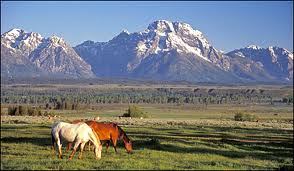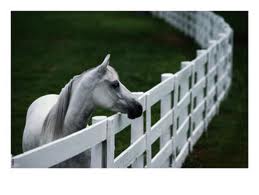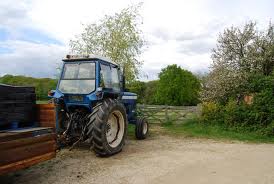|
Planning your pasture
Most horses benefit from being outside regularly for exercise. Free exercise reduces behavior and respiratory problems, promotes optimal growth and development of young horses, and improves overall horse health. However, if the acreage is to serve as a feed source, other factors need to be considered including its potential nutritional value, carrying capacity or stocking rate, and grazing system design.

Topography and Geography Individual fields should not include steeply sloping hillsides; soil types that vary significantly in suitabilities due to wetness, presence of rocks, inherent differences in fertility; or forage species that differ greatly in growth or yield characteristics.
Pasture Size the acreage should be large enough to handle your stocking rate and grazing system. For example, two three-acre-sized pastures should be sufficient for rotational grazing of two adult horses. Rectangular shaped fields tend to better suit horses as they encourage exercise. Irregular shaped fields should be avoided because they create a greater risk of injury. If the acreage is to be used for year round grazing, at least five acres per horse is needed; anything less should be considered an exercise area.
Sacrifice Paddock/Corral Dry lots, or sacrifice paddocks, provide an opportunity to move horses off fields when they are excessively wet or dry, and to avoid overgrazing. Dry lots can vary in size, however they should provide a minimum of 500 square feet per horse.
Water Clean, fresh water is a requirement for horses. Place waterers in areas where filling and cleaning is convenient, and if possible, where multiple fields have access.

Safety and Common Sense Use appropriate fencing materials for horses (ie. barbed wire should be avoided). Layout and design should be suitable for your horses and your farm.
Remember, management of horse acreage is an ongoing process that takes time, equipment, knowledge, diligence, and money. If managed well, your fields will be an economical source of high-quality forage, as well as a healthy place for horses to exercise.
Return from Planning your pasture to Horse Riding Connection
|
 Gate Placement Gates should be placed away from corners, closest to the direction of travel. Gates should be large enough to get equipment through (i.e. tractors, mowers etc...). Narrow gates should be avoided because they increase risk of injury when more than one horse passes through.
Gate Placement Gates should be placed away from corners, closest to the direction of travel. Gates should be large enough to get equipment through (i.e. tractors, mowers etc...). Narrow gates should be avoided because they increase risk of injury when more than one horse passes through. 